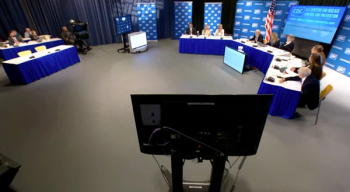
Cohesys reports first clinical use of drill-free fracture fixation device
Key Takeaways
- Cohesys Inc. has begun clinical use of BoneTape, a resorbable, hardware-free fixation device for craniofacial fractures.
- The study will evaluate risks such as infection and non-union, guiding regulatory and commercialization strategies.
Cohesys pioneers drill-free fracture repair with BoneTape, offering a patient-friendly alternative for craniofacial injuries and enhancing recovery experiences.
Cohesys Inc., a Toronto-based medical device developer, said that the first patients have been treated with its BoneTape system, marking the initial clinical use of the company’s investigational drill- and screw-free fixation device for non-load-bearing craniofacial fractures.
The procedures were completed as planned, the company said, and represent an early milestone in evaluating the device, which is designed to provide a resorbable alternative to traditional fixation hardware.
“Reaching this milestone is significant for Cohesys as we evaluate BoneTape’s potential to offer a simpler, patient-friendly approach to fracture repair,” said Michael Floros, the company’s CEO. “The data from this study will inform our regulatory strategy and commercialization pathway.”
Jeffrey A. Fialkov, head of the Division of Plastic and Reconstructive Surgery at Sunnybrook Health Sciences Centre and principal investigator for the study, said the device’s hardware-free design could simplify operations and improve recovery experiences.
“This marks an exciting step forward for the study, and it’s a privilege to be part of an effort exploring new techniques in facial-fracture treatment,” Fialkov said.
The study will closely monitor risks such as infection, non-union, and the possibility of re-operation. Cohesys executives said the trial is focused on collecting the clinical data necessary to evaluate BoneTape for future use.
BoneTape is applied using a handheld applicator that affixes the resorbable strip to bone surfaces, avoiding the need for drilling or screws. If successful, the device could reduce complications linked to implanted hardware and eliminate the need for follow-up procedures to remove fixation materials.
Advances in fracture fixation technologies
The field of fracture fixation has seen significant innovation in recent years, driven by a focus on minimizing surgical invasiveness, improving patient comfort, and reducing the risk of complications. Traditional methods such as metal plates and screws remain widely used and effective, but they can carry drawbacks, including irritation, infection, and the need for secondary surgeries to remove hardware.
Researchers and device developers have increasingly turned to resorbable materials that provide the necessary
Another area of progress has been the development of fixation systems designed to reduce surgical complexity. Surgeons are seeking alternatives that shorten procedure times, minimize drilling into bone, and reduce trauma to surrounding tissue. Some investigational devices aim to provide “hardware-free” fixation that relies on adhesives, tapes, or novel anchoring systems instead of screws and plates.
Digital tools are also beginning to play a role in advancing
As these technologies continue to mature, the focus remains on achieving strong, reliable fixation while improving the overall recovery experience for patients. Future innovations are likely to combine bioresorbable materials with minimally invasive delivery systems, potentially setting new standards for how fractures are treated.
Newsletter
Stay informed and empowered with Medical Economics enewsletter, delivering expert insights, financial strategies, practice management tips and technology trends — tailored for today’s physicians.















